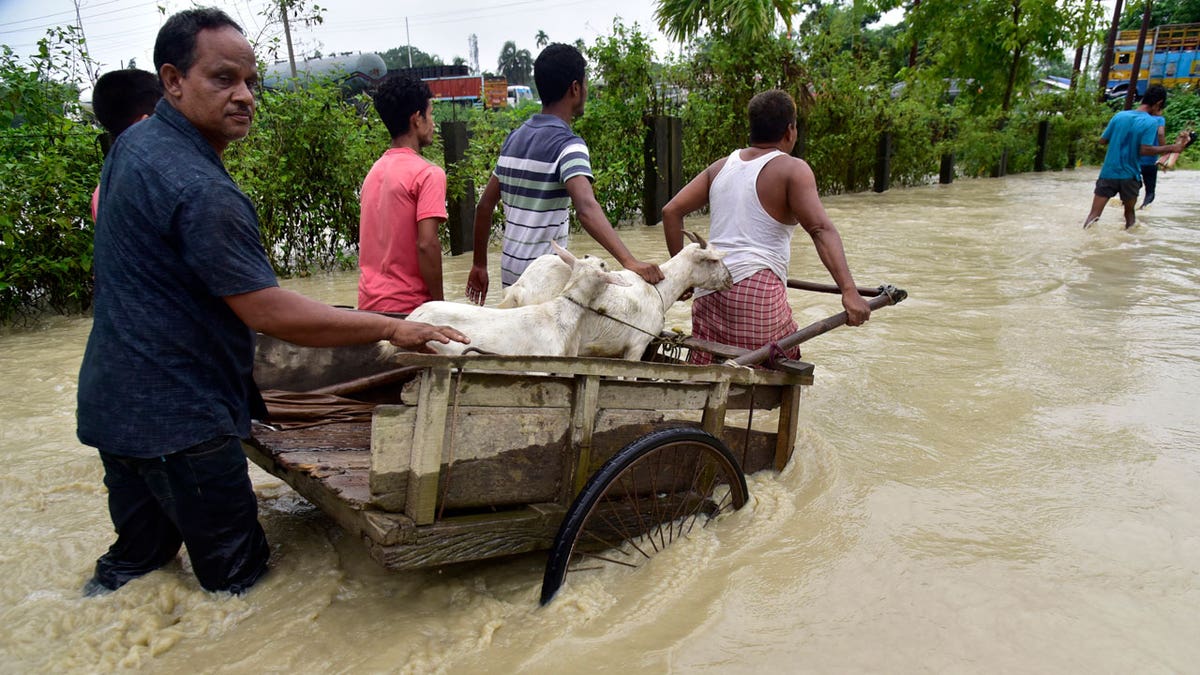Intense monsoon rains have forced tens of thousands of people in India's northeastern region to seek refuge in government-run relief camps. At least one fatality has been reported this week due to the rising floodwaters, according to a government agency statement released on Friday.
Assam state is under a red alert and is proactively evacuating residents from low-lying areas in anticipation of further heavy rainfall this weekend. The Assam state disaster management agency reports that nearly 14,000 people are currently housed in 83 relief camps across 20 of the state's 31 districts. The floods have impacted nearly half a million people in the state.
"We are fully prepared to handle the situation," stated G.D. Tripathi, a state government official, assuring that rescue teams are positioned in the most vulnerable and affected locations.
The Brahmaputra River, one of Asia's largest, is a major contributor to the annual flooding in the region. The river traverses 800 miles through Assam before entering Bangladesh, which shares a 160-mile border with the state.

The image above depicts individuals transporting livestock in the Nalbari district of Assam on June 21, 2023.
Heavy rainfall has also triggered mudslides in various parts of Assam and Sikkim. Media reports indicate that in neighboring Meghalaya state, a mudslide caused significant damage to a sports stadium's boundary wall and parked vehicles.
Last year, in 2022, severe flooding in India and Bangladesh resulted in numerous deaths and widespread displacement, leaving millions homeless. The annual monsoon season, occurring between June and September, is vital for agriculture but often leads to devastating consequences.
According to Roxy Mathew Koll, a climate scientist at the Indian Institute of Tropical Meteorology in Pune, monsoon patterns have been changing since the 1950s, marked by extended dry periods punctuated by intense rainfall. Scientists attribute these erratic weather patterns, which lead to unprecedented floods in Bangladesh and northeastern India, to climate change.
Comments(0)
Top Comments